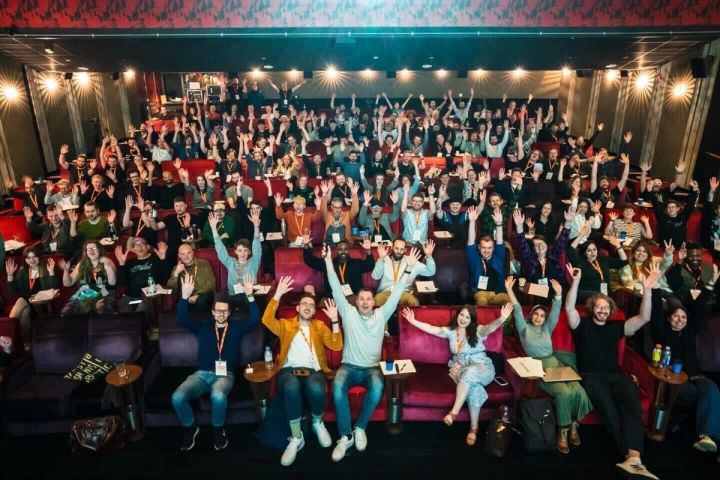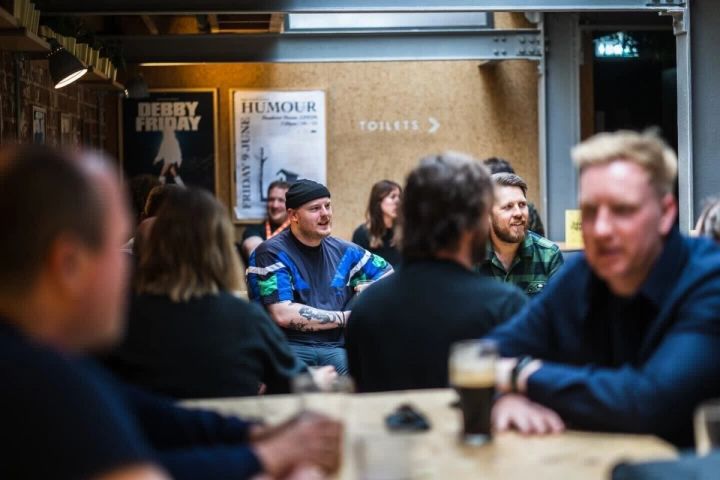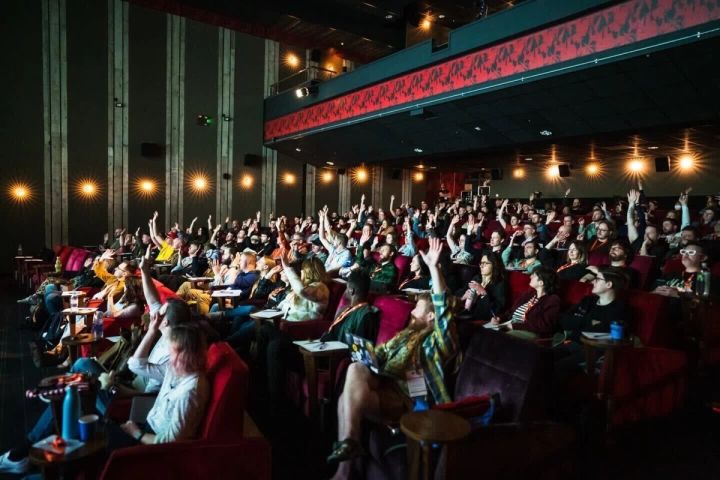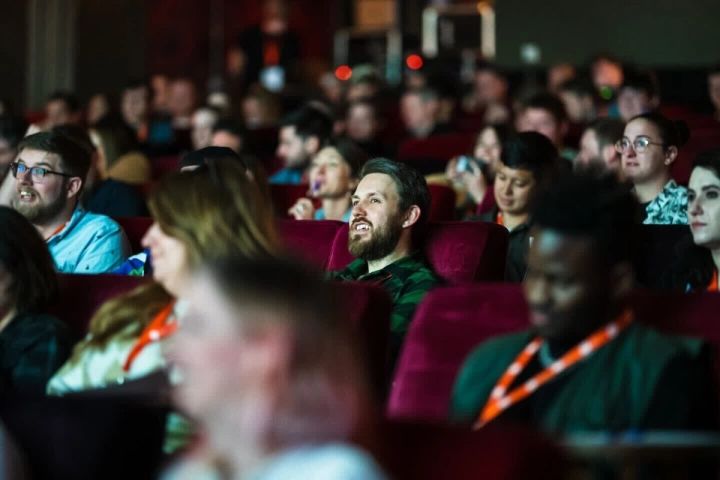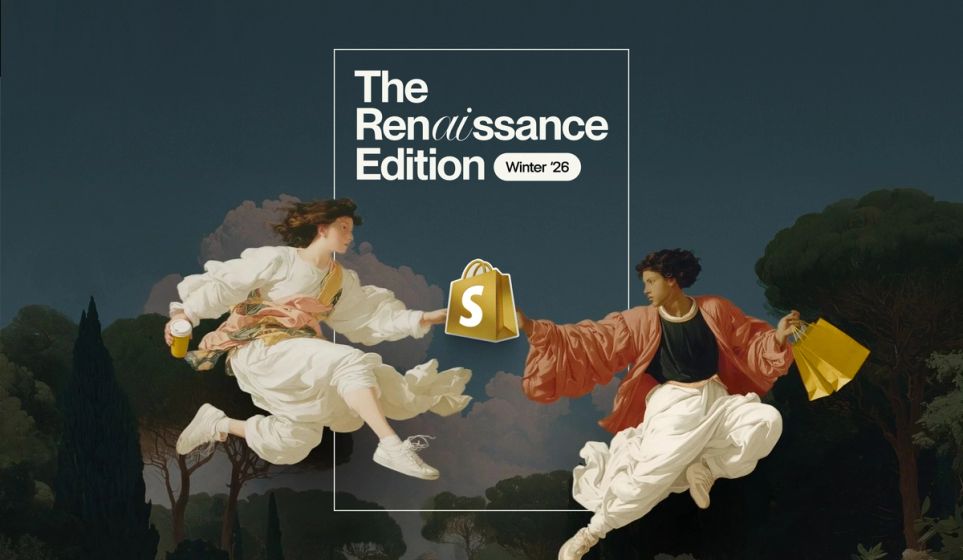
We took some time out to see what the future has in store for design and dev at Hey! All Day 2023. Here’s our pick of our favourite talks – plus the top takeaways from each.
Michelle Barker, “Building a greener web”
The web accounts for 3-4% of our planet's emissions. That’s the same as the entire aviation industry.
Web performance has been high on our agenda lately, and it’s something that’s already helping us to design and develop more consciously. Michelle provided some great insights on what we all can do to help reduce our environmental impact further.
1) Test your site’s environmental footprint. EcoPing, catchpoint and Digital Beacon are free tools that give you tons of insights.
2) Instead of Google Analytics, consider using more lightweight analytics that use less energy tracking users. We’re talking about the likes of Cabin, Fathom, Plausible, and Umami analytics.
3) Hold third-party resources and hosting accountable. Again, here are three great tools that will tell you how your partners measure up: Are my third parties green?, The Green Web Foundation, and Green Software Foundation.
3) A relatively simple one – and something we should all consider more – design websites to use less high-energy resources like video and more vector graphics and text.
4) And finally, consider your environmental footprint in code, too. And by that, we mean:
- Don’t add lots of code to support out-of-date browsers
- Add lots of caching wherever possible
- Do everything you can to optimise performance
Watch Michelle’s entire talk back here.
Emma Bostian, “Building effective cross-cultural teams”
Because we’re a multicultural agency, we’ve learned that great communication skills are right up there when it comes to working effectively. However, Emma spoke about the importance of being more mindful of culture when it comes to communication. And it’s definitely something we should all be more conscious of – not just at work, but in everyday life, too.
In a nutshell, she covered things like:
- How different cultures communicate, evaluate performance and give constructive criticism
- How differences in culture can impact decision-making
- And how balancing indirect and direct communication can make a huge difference in how people may interpret what you’re saying
Watch her full talk for more interesting insights around how we communicate.
Dina Amin, “Making by breaking”
Slight curveball (but something we were all fascinated by) was the story of stop motion artist, Dina Amin, who’s made a living from her love of taking things apart.
Growing up in Egypt, she always had an interest in objects and how they’re created. She’d visit the local marketplace and buy everything from old, poorly translated books to broken plug sockets. It was these collections of objects that would be taken apart as part of her weekly Instagram series ‘Tinker Friday’.
Today, Dina has almost 28K followers and collaborates with some of the world’s biggest brands.
Watch her talk in full to hear more about her journey so far.
Matt Wheeler, “Is your website accessible? Probably not”
In his talk, Matt covered all things web accessibility – and showed how your website probably isn’t as accessible as you think.As part of a study that looked at 1 million websites, 96.3% of homepages detected WCAG 2 failures. Research shows that 24% of people living in the UK have a disability, which means that the web isn’t meeting its true goal of being fit for everyone.
Matt rightly stated that accessibility starts with the brand. Basic things like: are your colours accessible? Are you using a typeface that is easy to read? Do the brand guidelines cover accessibility of the brand? These things should all be covered before handing over to a UI/UX designer so that accessibility isn’t an afterthought.
He also spoke about why, more than ever, accessibility should be top of the agenda.
More criticality on user experience
Accessible websites provide a more inclusive web experience – and that makes us as designers think more critically about the user experience.
Accessibility and SEO work together
One of Google’s key metrics is how accessible a website is. Another reason why continuous testing should be carried out.
Reach a wider audience
If a website is inaccessible, you may be cutting off a portion of your audience. And this means lost revenue in the long run.
Watch Matt talk more about accessibility in his full talk.
Amy Hupe, “How to write sh*t documentation”
Amy taught us all about the importance of good documentation – but in a way we didn’t expect.
She had us take part in a practical task, following a series of intentionally vague steps to draw a picture. Even though Amy knew what the outcome would be, it wasn’t clear to us, the audience.
Her next slide stated: "We cannot judge if something is both clear and correct. If we know it enough to say it is correct, we know it too well to say if it's clear". In other words, being very involved in a project doesn't mean that you can explain it the best. And that means there’s a risk you’ll overlook important details necessary for documentation.
Her other tips when it came to documentation included:
- Organise documentation by task, rather than by audience. Organise by audience and you’ll run into difficulties when trying to find where decisions can be made. This, in turn, makes things much more difficult to manage.
- Doing user research correctly can save you time and money. Learning your audience's knowledge level and ways of working will help inform the next stages of usability testing and task-based research.
Watch Amy’s full talk here.
Amanda Wowk, “Plain language: it's not just for designers”
Last up, Amanda Wowk – who showed us how important plain language can be.
Today, 1 in 6 adults in England have literacy levels at or below Entry Level 3, which is the literacy level of a 9-11 year old.
Using plain language isn’t just important for fulfilling simple work tasks, it has the power to make a workplace more inclusive and accessible. In other words, using plain language 'makes it easier for us to understand each other and what we do' and 'work better together and deliver better work'.
Don’t think of it as ‘dumbing it down, but opening it up’.
Watch Amanda’s full talk back for more tips around using plain language and why we should be doing it more.
Want more design and dev tips from the team? You've come to the right place...

